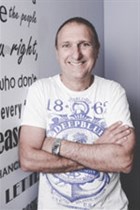"If I can make it there
I'll make it anywhere
It's up to you..."
It's been sung by Frank Sinatra, covered by Beyoncé, and belted out by Michael Bublé at Madison Square Garden. It is, of course, 'New York, New York', the theme song for the eponymous movie directed by Martin Scorsese, whose lyrics speak of that "city that never sleeps". Whatever way you look at it, New York has become a part of our global culture and occupies a perceptual space in most people's mind unlike any other city from Nigeria to Norway.
The reason why New York City lives so prominently in our collective perceptions is in part because of its history, legacy and iconography. The Statue of Liberty, that colossal work of art that rises up from Liberty Island in New York Harbour is one of the most recognised icons in the world, and has frequently been depicted in books, art and movies. The symbol of freedom first appeared in the premier of the 1968 movie, Planet of the Apes and is frequently represented in films like Independence Day, The Day After Tomorrow, and Cloverfield, where it was destroyed to indicate a pessimistic view of the feature.
Other major landmarks in New York City include Ellis Island which served as New York's key immigration station from 1892 to 1954, and which has taken on a stature of mythical proportions for those people (and their descendants) who came to the US in search of the 'American dream'.
"New York is probably the world's greatest branded city. The brand key is integration and direction. That is driven by a combination of single-minded leadership about what New York is: an eclectic mixture of people, all of whom, regardless of sex, age or creed, have the potential to realise their dream - if they work at it," says Jonathan Gabay, a creative branding expert and founder of Brand Forensics, which helps global companies explain and promote their brand values.
"NYC means a "can-do" attitude that manifests itself in everything from towering skyscrapers to customer service. This combination is so admired that it seamlessly gets branded on anything from a baseball cap to a coffee mug," Gabay says in a Guardian article about city brands.
What's interesting about New York City is that while most famous urban places have brands that have developed organically, NY is one of the few metropolitan brands that were 'constructed'. In Branding New York: How a City in Crisis Was Sold to the World the story is told of how in the 1970's New York City was a place in crisis, a municipality characterised by financial disaster, strikes, rolling blackouts and rising crime.
The book states that unlike Las Vegas that was historically dependent on tourism for income, New York City was "the nation's industrial, commercial and financial hub without the use of large-scale official marketing, and through the 1960s its political leadership continued to see promotional efforts as ancillary, if not irrelevant, to their overall strategy of economic development".
The step change started in the late seventies with the memorable "I?NY" campaign which was launched during the 'Summer of Sam', a time when the city was being plagued by blackouts and a menacing serial killer. What followed was a concerted political campaign backed by one of the most "coordinated, consistent and capital-intensive" metropolitan marketing campaigns in urban branding history.
Globalisation, migration and the rise and rise of the internet has created a new world where urban areas compete with each other for tourism, talent, investment, consumers and international events like the Olympics. The lesson in branding New York City shows that it is possible to turn perceptions of a city around with the right political will, a visionary leadership team that's united by its desire to affect urban change, and a consistent and enduring campaign that's kept fresh, relevant and real.
But what's crucial to understand about city branding is that it isn't about the branding but about the policy, politics and the urban product. As researcher, author and independent policy advisor, Simon Anholt, says, the only remaining superpower in the world that matters anymore is public opinion. The nation branding guru advises that branding a city is about creating "effective diplomacy" with that "superpower".
"The only sure way places can change their images is by changing the way they behave: they need to focus on the things they make and do, not the things they say," says Anholt. In one of his books, Competitive Identity, Anholt has created a list of how cities or nations can build their reputations and brands.
Reviewing the list it is all about doing (policy and action) rather than saying (communication and propaganda). Anholt's list for earning a better reputation is through:
- courageous and enlightened social, economic, environmental and foreign policies;
- the dynamic development of tourism, foreign investment and exports;
- carefully chosen international cultural, sporting and political events;
- improved cultural and academic relations with other countries;
- a strategic commitment to international development and poverty reduction;
- productive engagement with multilateral institutions, regional organisations and with NGOs at home and abroad;
- effective coordination between government, industry and civil society;
- enhanced public and private diplomacy overseas;
- a visionary long-term approach to innovation, investment and education.
It is possible to change city brands and fortunes. Johannesburg, Nairobi or Lagos could become one of the most recognised and sought-after city brands in the world, but ironically to do that would take everything but what marketers currently understand as branding. It would take changing the way the city is run for the better, in a very real and sustainable way. It would be about becoming world class - and only then taking on the world.

































